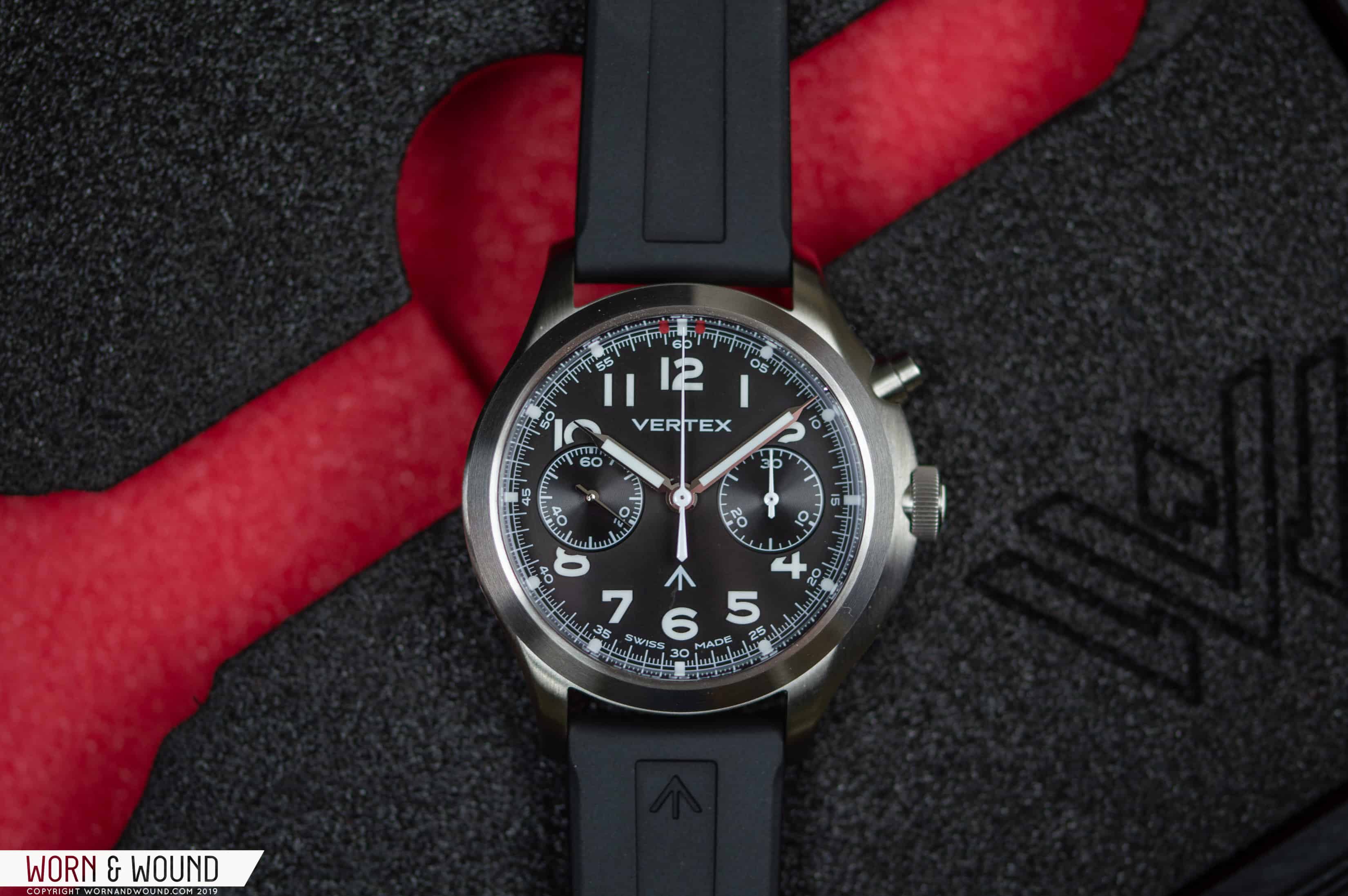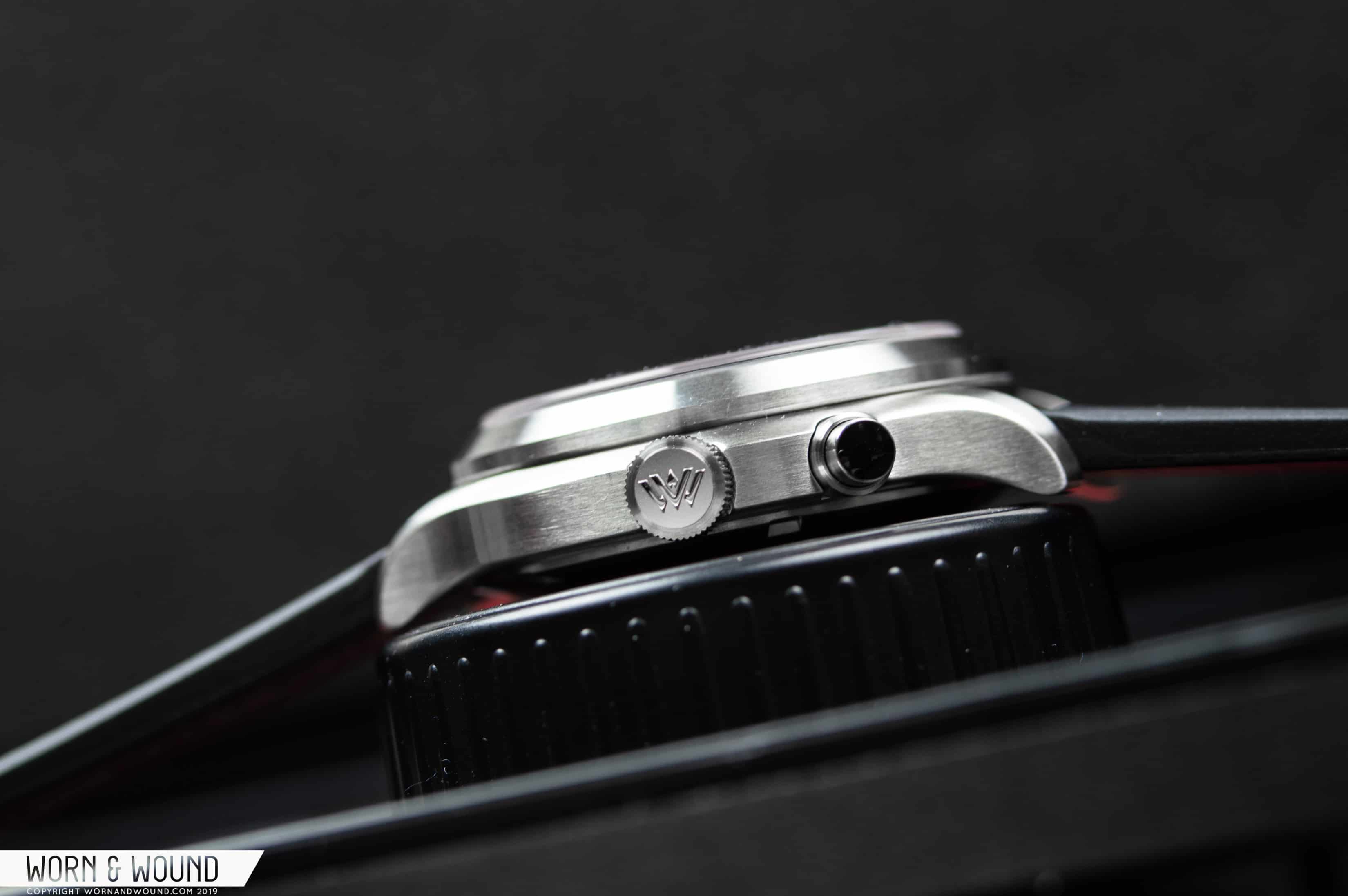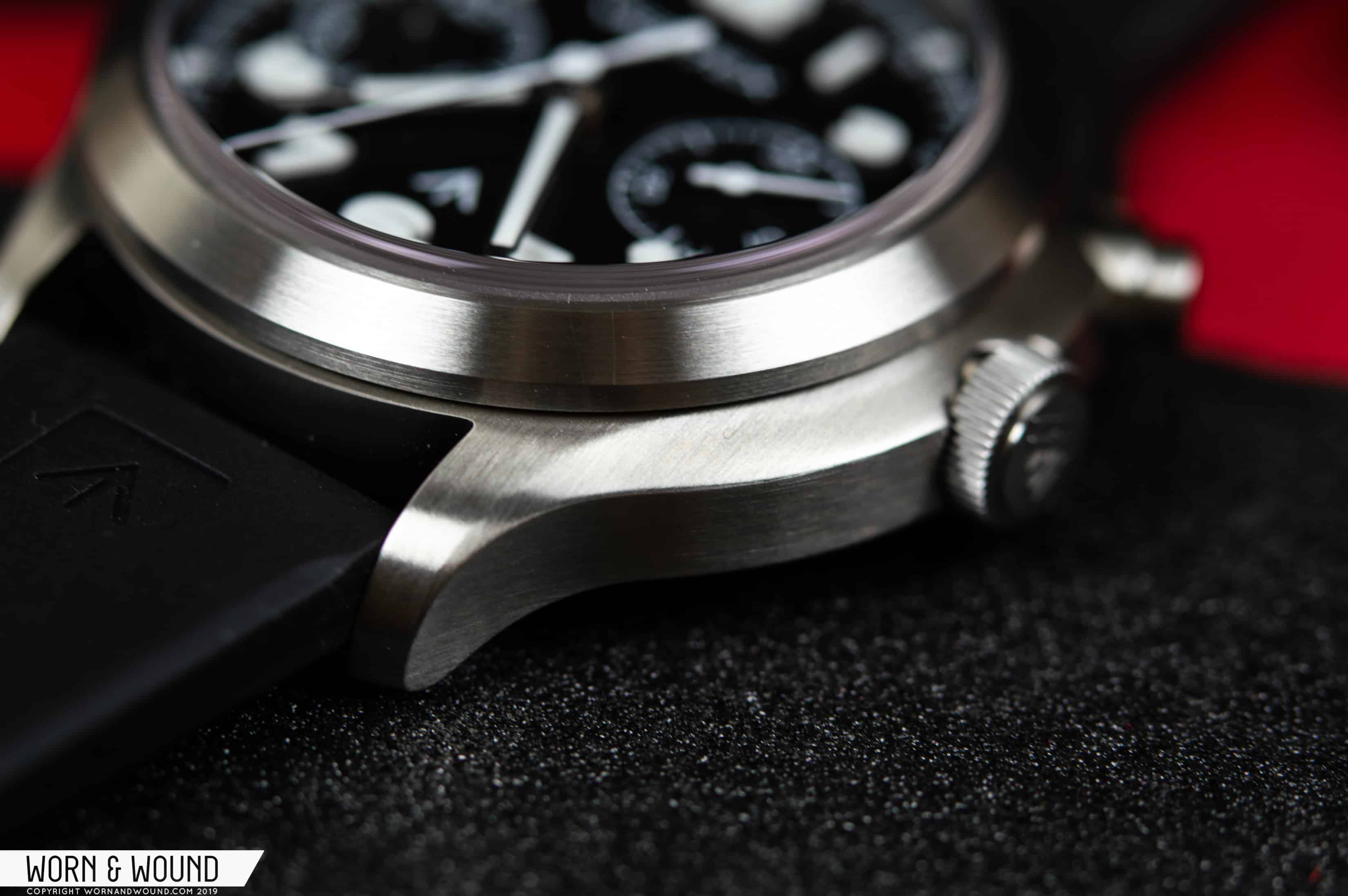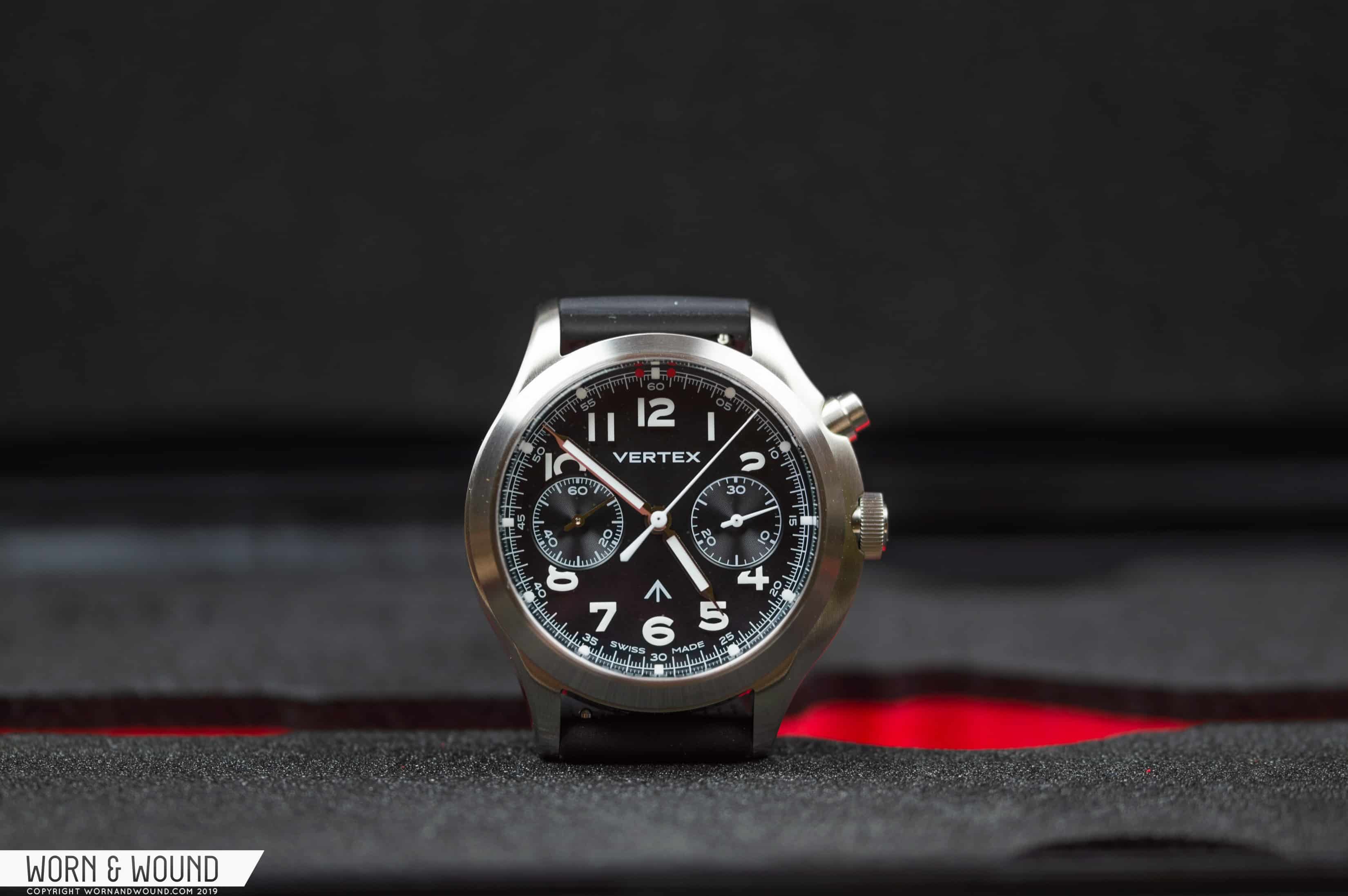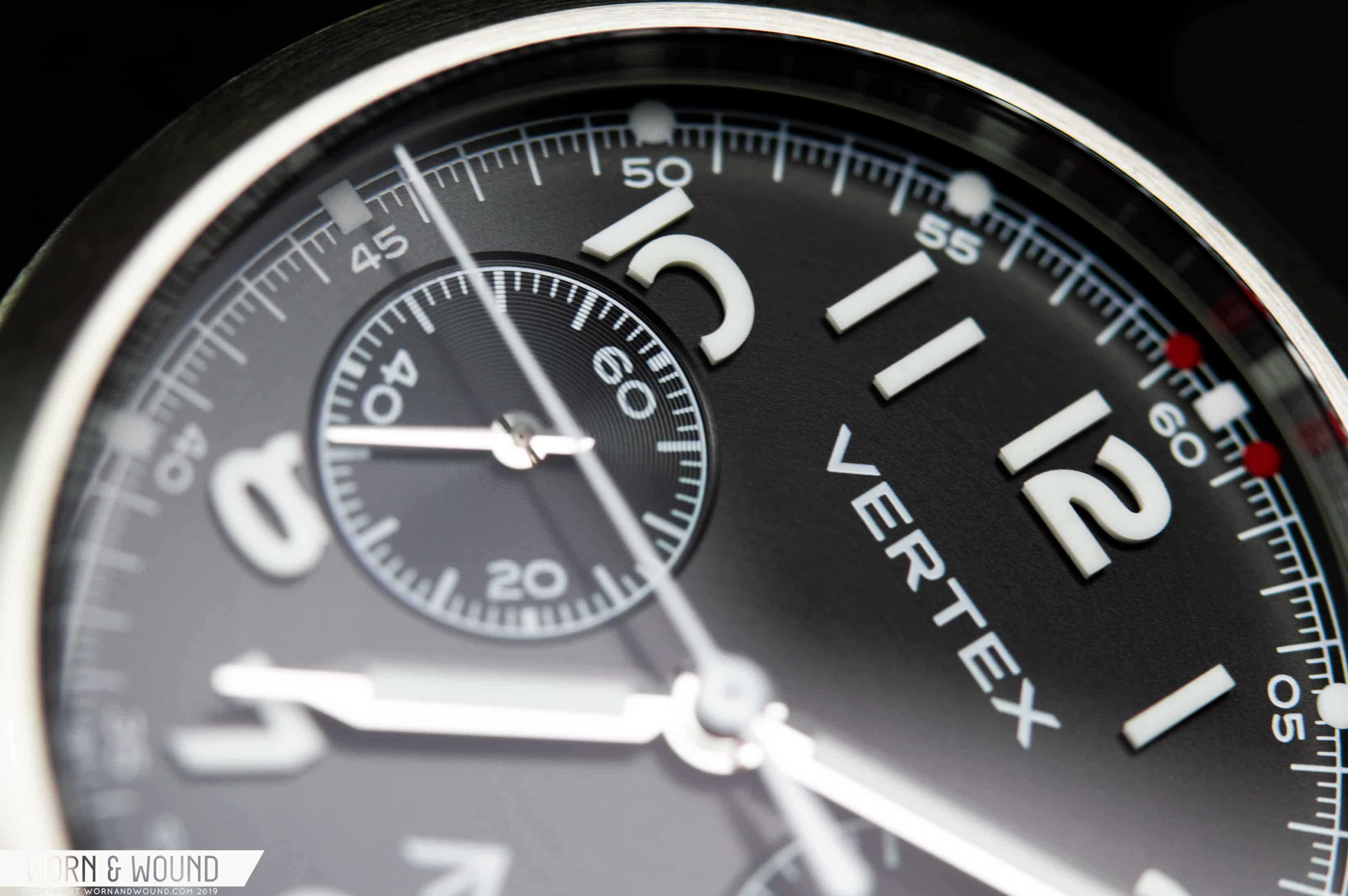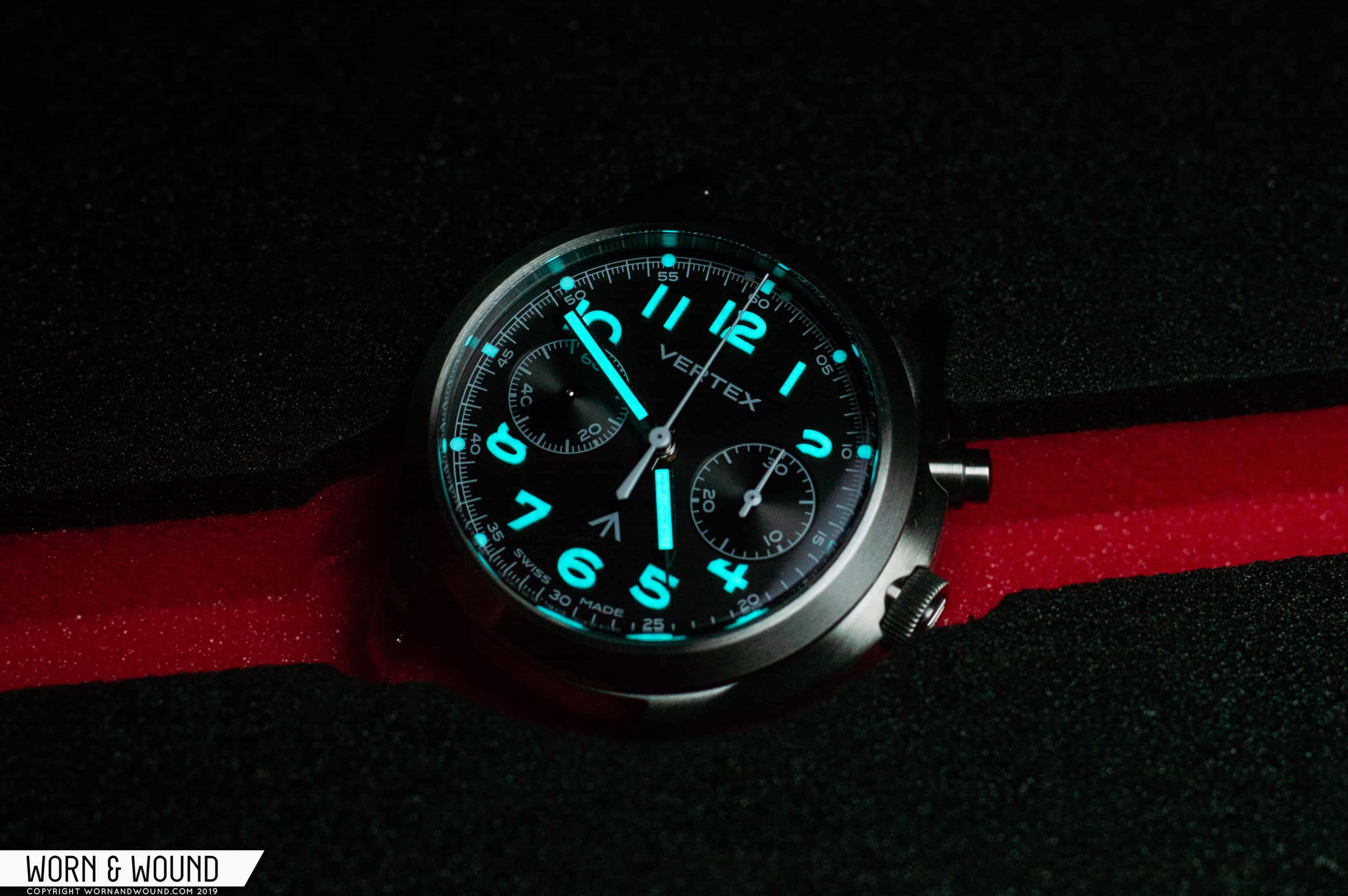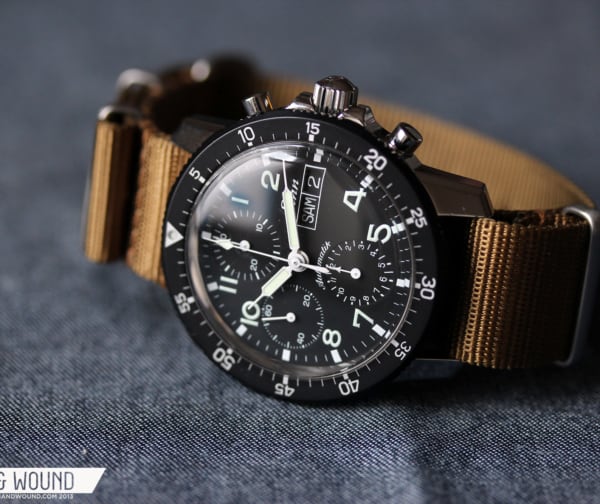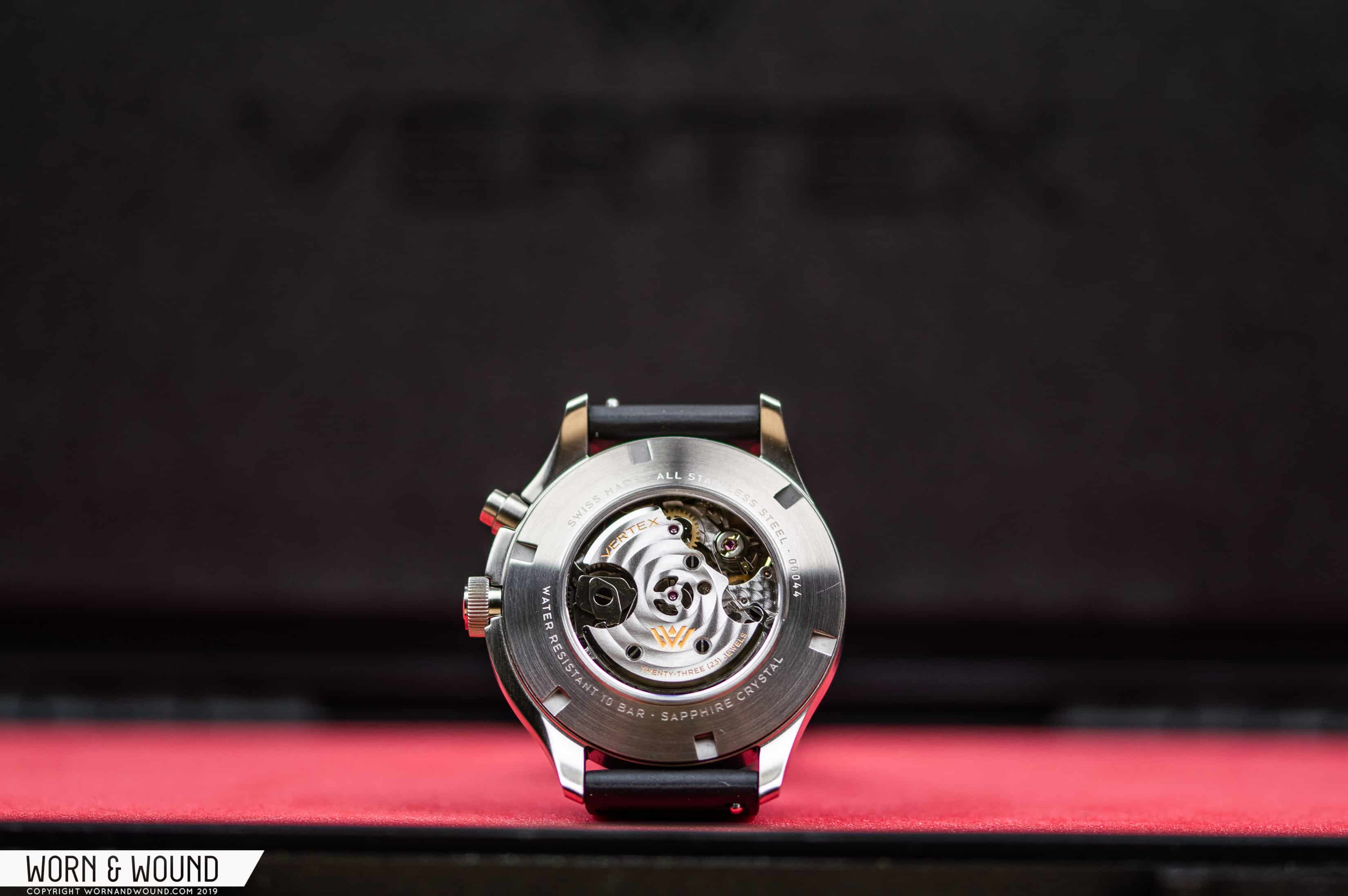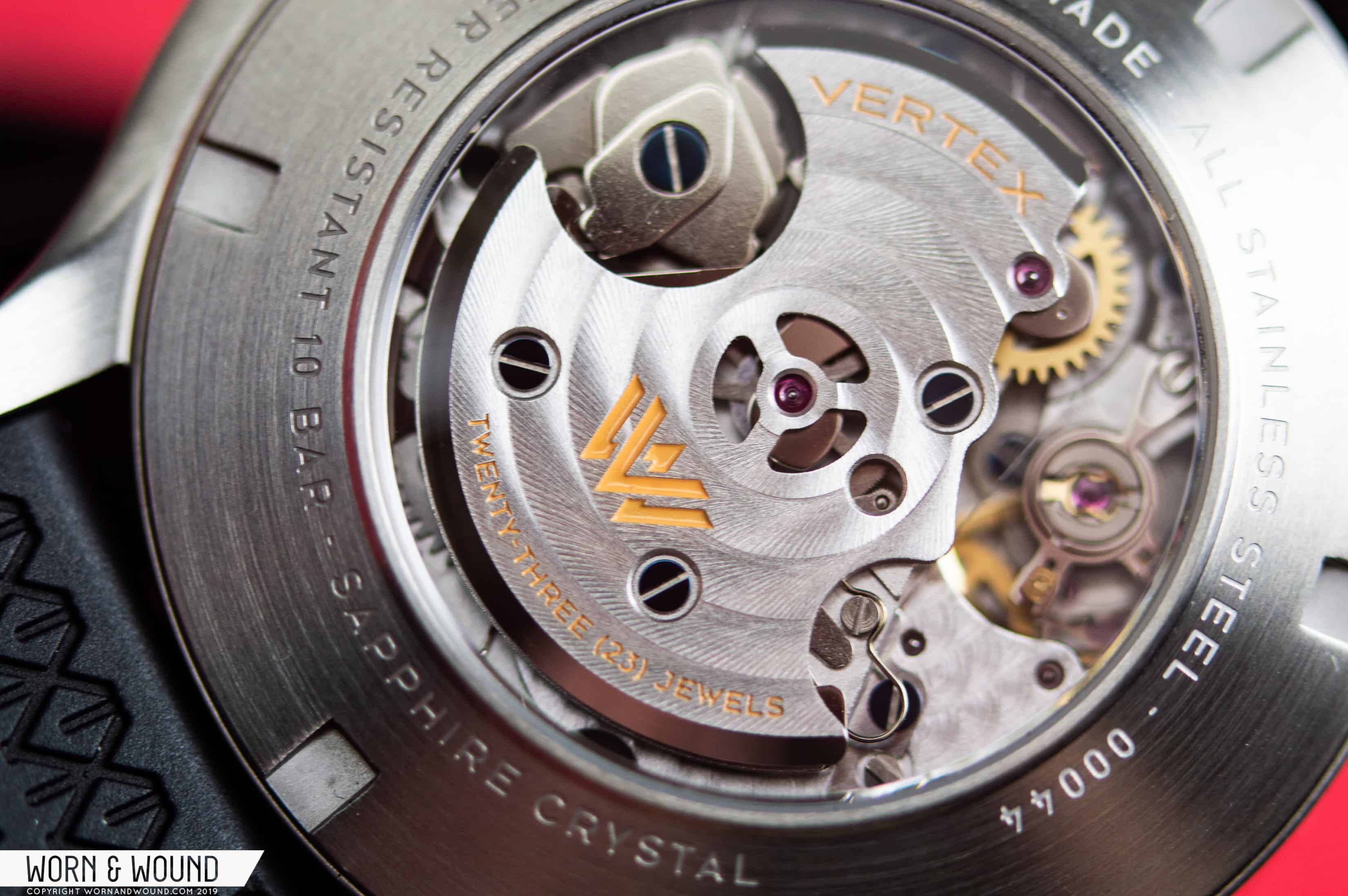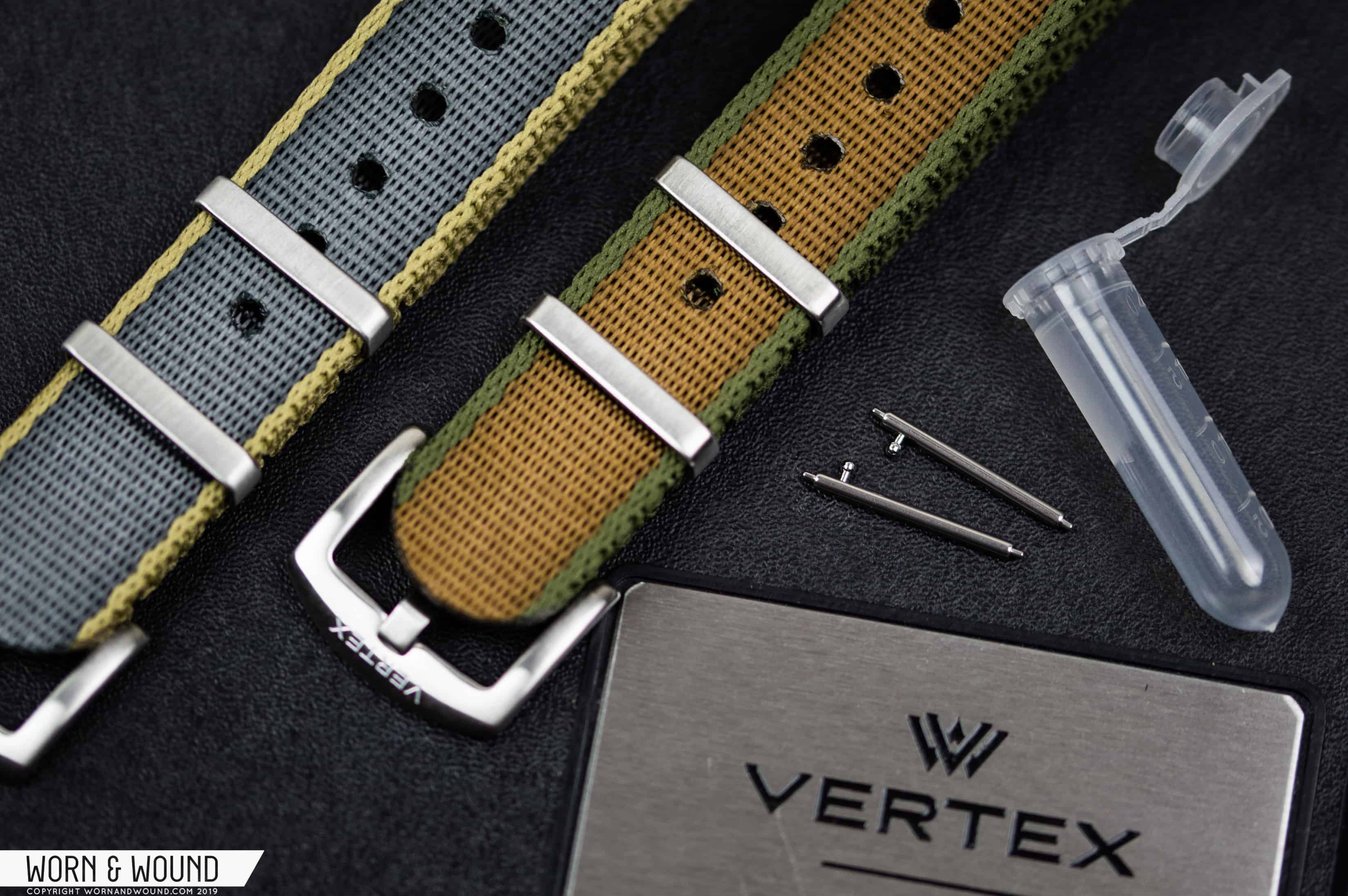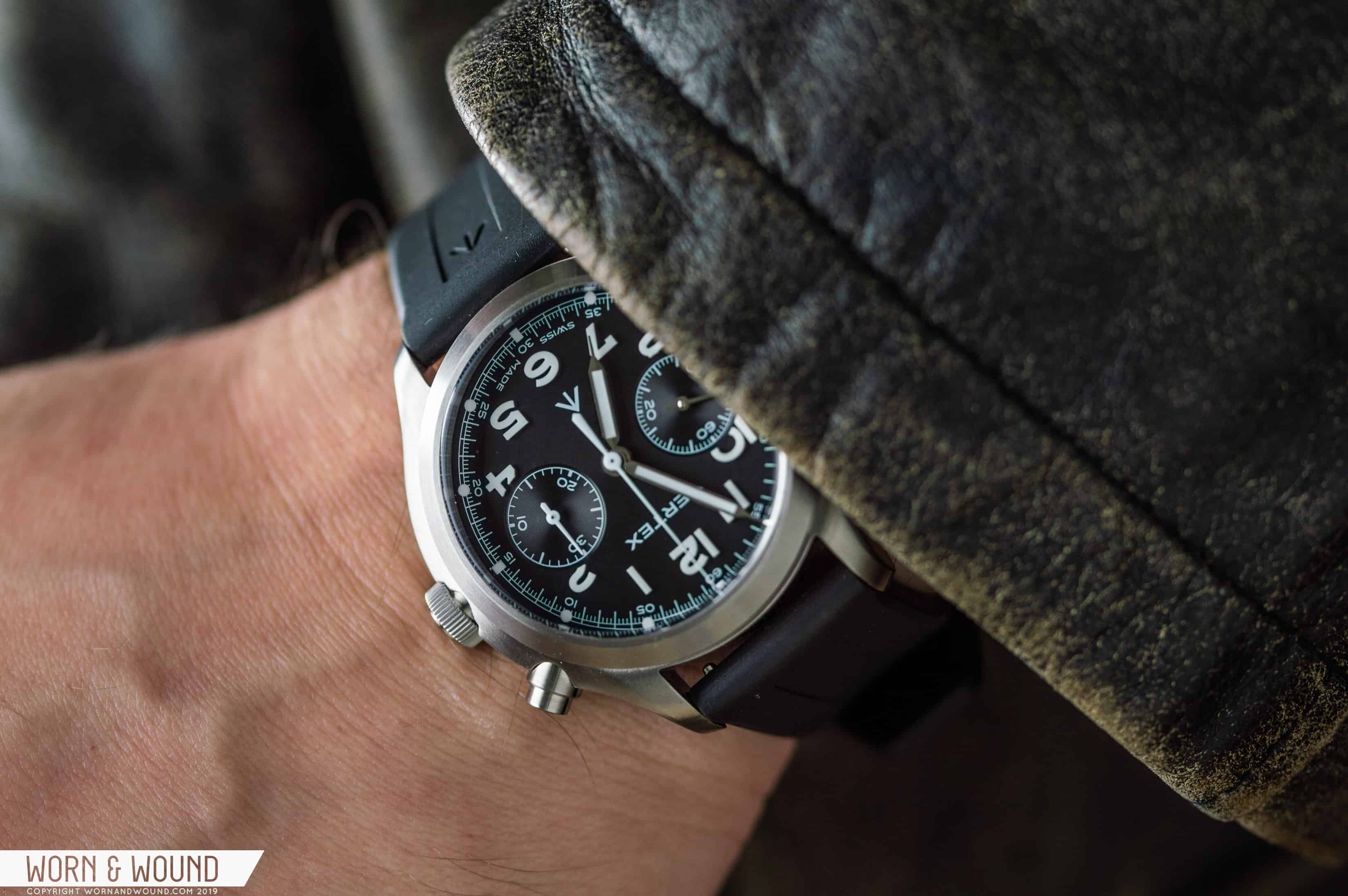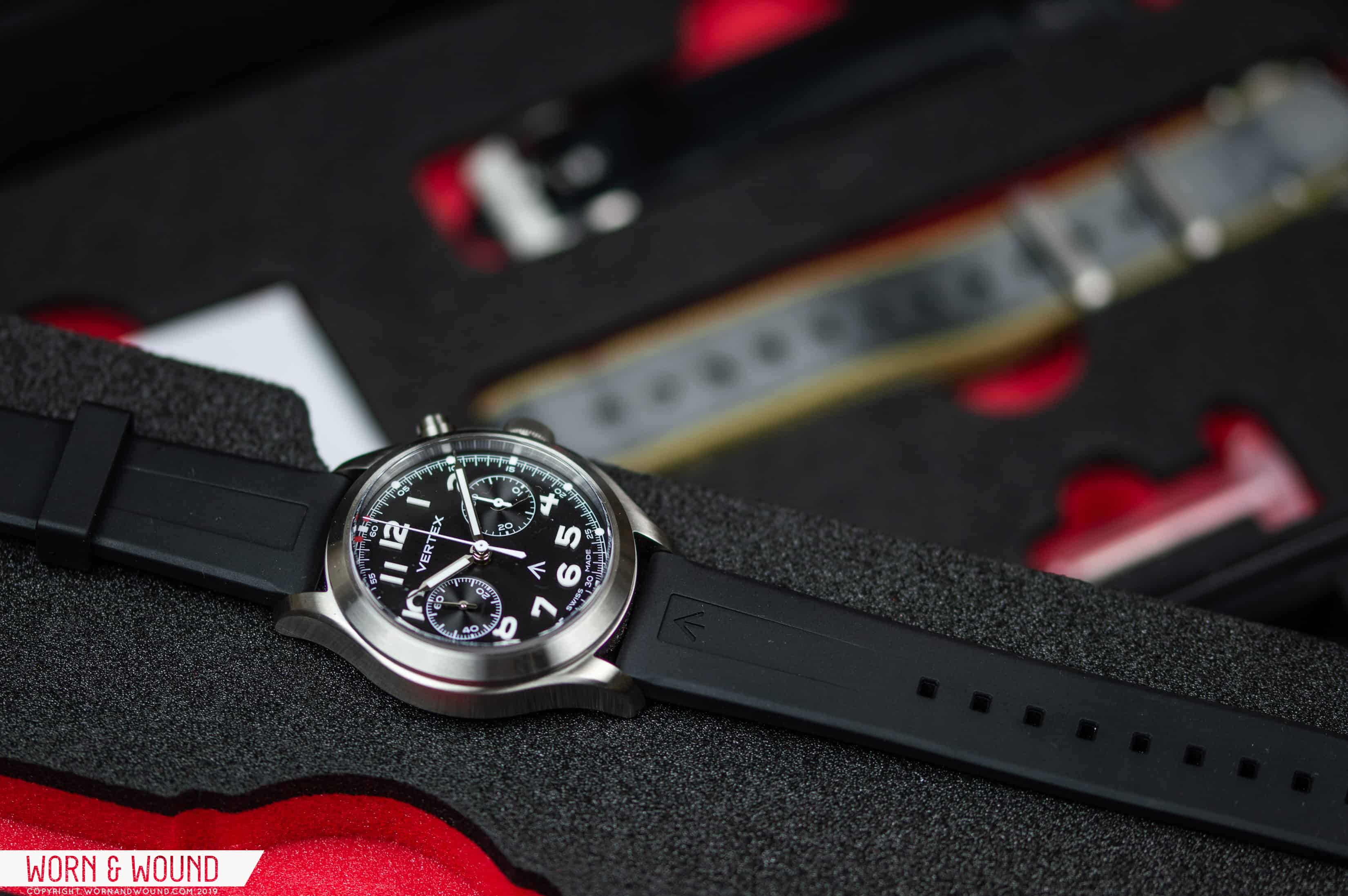Straps and Wearability
As standard, the MP45 is delivered on a quality solid black leather strap lined in red. Hidden in a second tier within the Peli Case are three other straps — a black rubber strap and two mil-style straps. For me, the rubber works perfectly with it being more malleable than the leather straight out of the box, therefore offering a comfortable fit.
![]() The leather and rubber straps are both fitted with quick-release spring bars. Though I can see the benefit in having them, I’m usually indifferent to quick-release straps as more often than not one of the straps being switched out or switched in will need to use regular spring bars anyway, thereby taking away a lot of the convenience. But when a watch comes with more than one quality strap, and all are equipped this way, the benefits are much greater. To make use of the mil-style straps, Vertex have even included a small vial containing a set of individual quick release spring bars.
The leather and rubber straps are both fitted with quick-release spring bars. Though I can see the benefit in having them, I’m usually indifferent to quick-release straps as more often than not one of the straps being switched out or switched in will need to use regular spring bars anyway, thereby taking away a lot of the convenience. But when a watch comes with more than one quality strap, and all are equipped this way, the benefits are much greater. To make use of the mil-style straps, Vertex have even included a small vial containing a set of individual quick release spring bars.![]()
The nylon straps give the watch an entirely different look, and, as great as it looks off the wrist, I did find the watch wore slightly too tall for me personally on nylon.
If none of the included straps are to your liking, a combination of a 20mm lug width and black dial is probably the most versatile pairing you could ask for, so options are almost limitless.
Conclusion
Relaunching a brand isn’t easy, but it could be argued that Vertex had a leg up with the M100 as a modern interpretation of their legendary “Dirty Dozen” watch. But then came the issue of keeping up that momentum with the difficult task of putting out a solid sophomore release, which I think required a bit more consideration. Vertex may have found a design that was already pencilled and just waiting to be brought to life, but that’s a different trick second time around when the watch never actually existed. The cachet of a historical piece isn’t present, but that also allows more freedom to make the MP45 its own watch.![]()
This is a watch I struggle to find fault with, and part of that is because there really isn’t too much to compare it to. I guess the overall thickness, partially cut numerals, and even the functionality of the monopusher chronograph itself could all subjectively be seen as negatives, but these are also features that make this watch feel distinct. Furthermore, the level of finishing, details, and execution of the design are excellent. Given the price of £2,900 excluding VAT (roughly $3,780 with current exchange rates), the Vertex MP45 is certainly aiming high, but I’d argue the whole package largely lives up to that billing. 400 watches are being made (200 with the hand-wind movement seen here, and 200 with the automatic version), and are available now directly from Vertex. Vertex
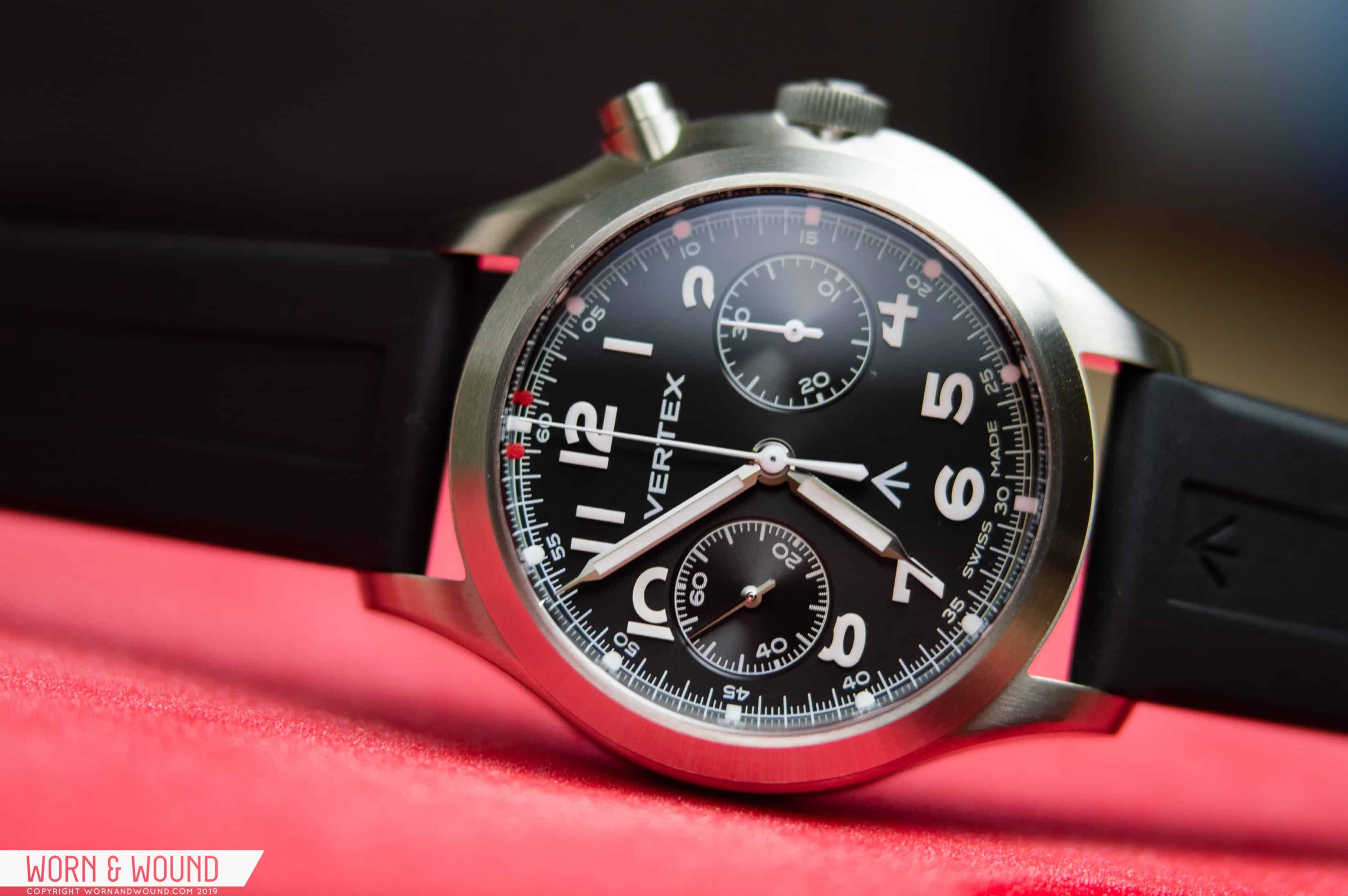









 Featured Videos
Featured Videos




